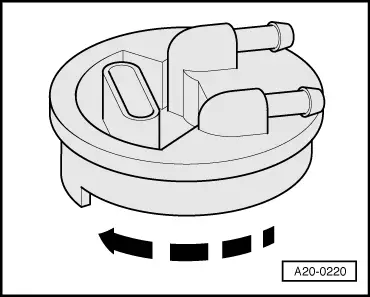A4 Mk1
|
Removing and installing parts of fuel supply system
Removing and installing fuel delivery unit (vehicles with four-wheel drive)
Observe notes . Observe safety precautions=> Page 20-2 Observe rules for cleanliness => Page 20-3 Special tools, testers and auxiliary items
Removing Notes:
|
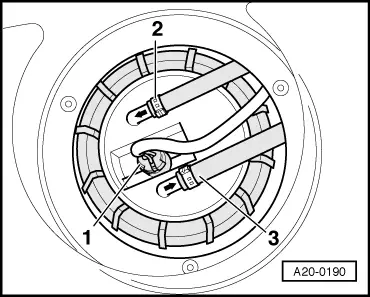 |
|
|
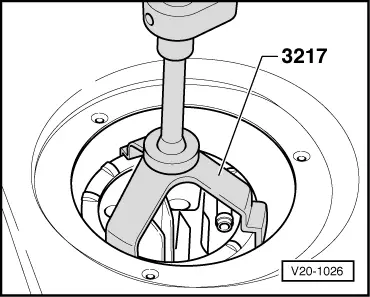 |
|
|
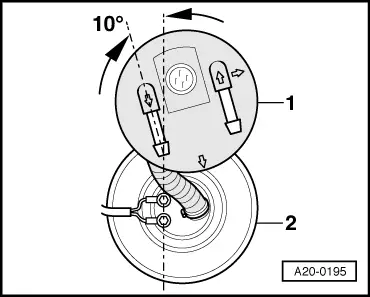 |
|
Note: Fit a toothed washer under each nut.
|
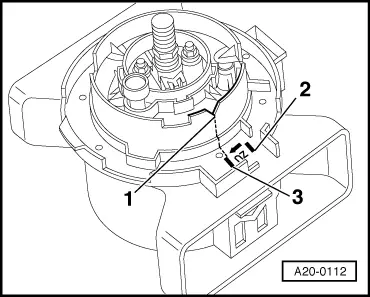 |
|
|
Installing
Note: |
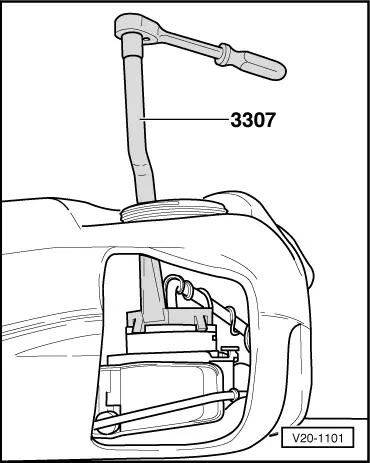 |
|
|
Baffle housing is shown without fuel tank for a clearer illustration.
|
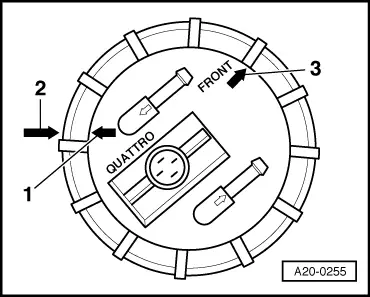 |
|
Note: -Arrow 3- is for vehicles with front-wheel drive (can be disregarded). |
 |
|||||||
Note: Ensure that fuel pipes are securely seated. Tightening torque
| |||||||

